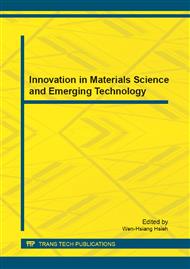p.209
p.214
p.219
p.224
p.229
p.234
p.240
p.245
p.252
Building Biomarker Combinations for Korean Ovarian Cancer Screening Using Statistics and Machine Learning
Abstract:
Early screening using appropriate biomarkers is helpful for the effective treatment of ovarian cancer. CA-125, the most widely used biomarker for the diagnosis of ovarian cancer, has high false positive and false negative rates. We introduce an approach for determining an appropriate combination of biomarkers known to be highly related to ovarian cancer among 21 predetermined biomarkers. Sera representing 27 cases and 31 controls from women undergoing surgery were examined using high-throughput, multiplexed bead-based immunoassays. Student’s t-test and a genetic algorithm (GA) were employed and compared for building the proper combination of two to four biomarkers. The combinations selected by both methods were compared with a 5-fold cross validation of the LDA classifier. The combination of four markers chosen by the GA had the best performance in regards to accuracy, with sensitivity and specificity of 81% and 100%, respectively.
Info:
Periodical:
Pages:
229-233
Citation:
Online since:
December 2011
Price:
Сopyright:
© 2012 Trans Tech Publications Ltd. All Rights Reserved
Share:
Citation:


